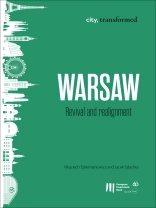With 3 million residents, the Metropolitan Warsaw region is today the ninth most-populated capital city in the EU. It has undergone a series of far-reaching changes to its economic structure over the past 50 years to attain this status.
This essay reviews how Poland's capital went from environmental and infrastructure degradation to the wealthiest capital city in Eastern Europe.
Про автора
Wojciech Dziemianowicz is Associate Professor at the University of Warsaw Faculty of Geography and Regional Development and a member of the Committee for Spatial Economy and Regional Planning at the Polish Academy of Science. He was a key expert for the Warsaw 2030 development strategy and has headed five research projects financed by the National Science Centre.
Jacek Szlachta heads the Department of Regional and Spatial Development at the Warsaw School of Economics and is Deputy Chairman of the Committee for Spatial Economy and Regional Planning at the Polish Academy of Science. He was a visiting scholar at the Massachusetts Institute of Technology and Strathclyde University, and an adviser to the chair of the committee on regional policy in the European Parliament. He has worked with EU assistance programmes, the European Spatial Planning Observation Network, the OECD and the World Bank.












